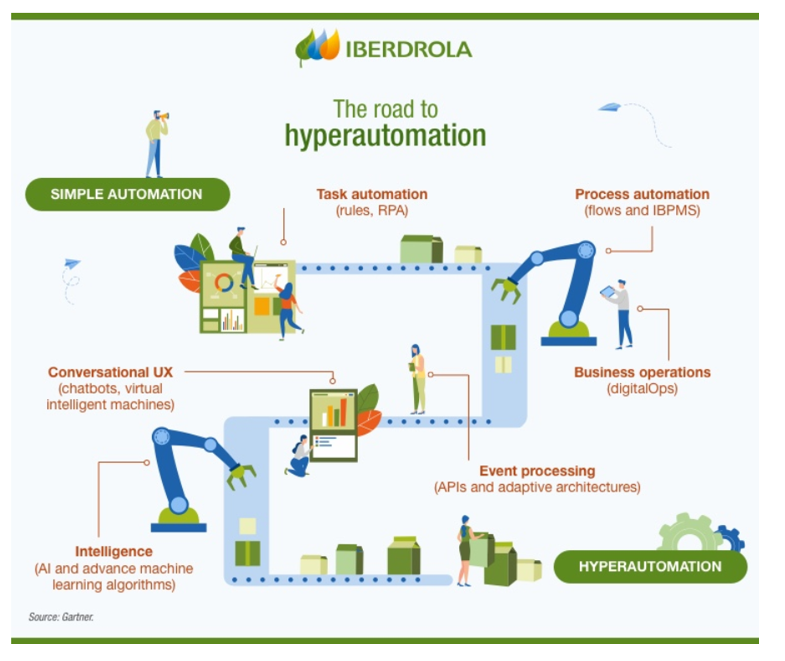What is Hyperautomation?
In layman’s terms:
In layman’s terms, Hyperautomation is like having a super-smart robot assistant that not only does simple tasks for you but also learns, adapts, and takes care of more complex jobs. It’s the all-in-one superhero of automation, using the latest technology to make things easier, faster, and way more efficient in our daily lives or at work.
Bookish definition:
Also known as Fourth Industrial Revolution, which brings robotization, the Internet of Things , and Artificial Intelligence. Hyperautomation, also called digital process automation (DPA) or intelligent process automation (IPA), looks like one of the technological trends that will have the greatest impact in the coming years.
It is a comprehensive approach to automation that leverages advanced technologies, including artificial intelligence, machine learning, robotic process automation, and other digital tools, to streamline and optimize end-to-end business processes. It aims to automate not only repetitive tasks but also complex decision-making processes, enabling organizations to achieve higher efficiency, agility, and innovation across their operations.
Why now?
Born to Unleash Efficiency, Embrace Complexity, and Transform Tomorrow’s Work with Technological Brilliance
Hyperautomation emerged in response to the evolving demands of the business landscape, driven by the convergence of various technological advancements and the need for organizations to become more efficient, agile, and adaptive. Several factors contributed to the emergence of hyperautomation:
⮚ Complexity of Business Processes
⮚ Advancements in Technology
⮚ Demand for Operational Efficiency
⮚ Data-Driven Decision-Making
⮚ Need for Scalability
⮚ Changing Nature of Work
⮚ Digital Transformation Initiatives
⮚ Dynamic Business Environment
In essence, hyperautomation came into existence as a natural evolution of automation, combining advanced technologies to address the limitations of traditional approaches and meet the multifaceted challenges posed by modern business dynamics. It represents a strategic response to the need for organizations to stay competitive, innovate, and navigate the complexities of the Fourth Industrial Revolution.

The Marvelous Benefits of Hyperautomation

Integration of Technologies:
Hyperautomation goes beyond basic automation by incorporating a wide array of technologies such as artificial intelligence, machine learning, robotic process automation (RPA), natural language processing, and more. This integration allows organizations to create a seamless and interconnected system.
End-to-End Automation:
While traditional automation focuses on automating specific tasks or processes, hyperautomation aims to automate entire end-to-end workflows. It looks at the entire business process, identifies opportunities for automation, and implements solutions that span across different departments and functions.
Enhanced Decision-Making:
Hyperautomation leverages advanced analytics and AI algorithms to enhance decision-making processes. It not only automates routine and rule-based tasks but also incorporates intelligence to handle complex decision-making, learn from data patterns, and adapt to changing circumstances.
Scalability and Flexibility:
Hyperautomation is designed to scale with the growing needs of an organization. It offers flexibility to adapt to changing business requirements and technological advancements. This scalability ensures that automation efforts can expand across the organization, covering a broader range of processes.
Improved Operational Efficiency:
By automating mundane, repetitive tasks and optimizing complex processes, hyperautomation significantly improves operational efficiency. This allows organizations to allocate resources more strategically, reduce errors, and enhance overall productivity.
Data Integration and Analysis:
Hyperautomation relies on the seamless integration of data from various sources. It not only automates data collection but also incorporates advanced analytics to derive insights from the data. This data-driven approach enables organizations to make informed decisions and continuously improve their processes.
Agility and Innovation:
In the rapidly changing business landscape, organizations need to be agile and innovative. Hyperautomation fosters innovation by automating routine tasks, freeing up human resources to focus on creative and strategic activities. This agility enables organizations to adapt to market changes more efficiently.
Ingredients of perfect hyperuatomation
Hyperautomation is not based on one single technology but on integrating several of them, including:
Robotic Process Automation
Robotic process automation makes it possible to configure software that allows robots to perform repetitive, structured tasks in digital systems.
Machine Learning
Machine Learning is the technology that uses algorithms to teach computers to perform complex tasks by themselves without the need for additional programming by human beings.
Artificial Intelligence
The purpose of Artificial Intelligence is to create machines that are capable of making decisions and solving problems by emulating human logical thinking.
Big Data
Big Data is a set of technologies that make it possible to store, analyze and manage huge amounts of data produced by devices to identify patterns and create optimal solutions.
Cobots
Cobots are the prime example of collaborative robotics, in other words, robots that share tasks with human workers and are revolutionizing production processes.
Chatbots
Chatbots are systems based on AI, ML and Natural Language Processing (NLP) that can hold a conversation in real time with a human being using text or speech.
The Impact on Industries: A Technological Tsunami Redefining Industries
Healthcare
In healthcare, hyperautomation streamlines patient data management, accelerates diagnostics, and enhances personalized treatment plans. Robots assist in surgeries, and AI analyzes medical records, fostering a new era of precision medicine.
Finance
In the financial sector, hyperautomation revolutionizes transactions, fraud detection, and risk management. AI-driven algorithms provide tailored investment strategies, while RPA ensures seamless compliance with regulatory requirements.
Manufacturing
Manufacturing processes are redefined as cobots collaborate with human workers, ensuring safety and efficiency. Predictive maintenance powered by AI minimizes downtime, maximizing overall productivity.
Customer Service
Hyperautomation enhances customer service, where Chatbots swiftly address queries, analyze customer feedback, and personalize user experiences. This not only boosts customer satisfaction but also fuels brand loyalty.
Embrace the Future: Hyperautomation, Where Innovation and Efficiency Conspire to Redefine Tomorrow!
As hyperautomation continues to evolve, businesses that embrace this transformative force gain a competitive edge.
The journey into the era of hyperautomation is not just about embracing technology; it’s about unlocking unprecedented possibilities, fostering collaboration between humans and machines, and shaping a future where efficiency knows no bounds.
Welcome to the age of Hyperautomation, where the extraordinary becomes the new normal.
